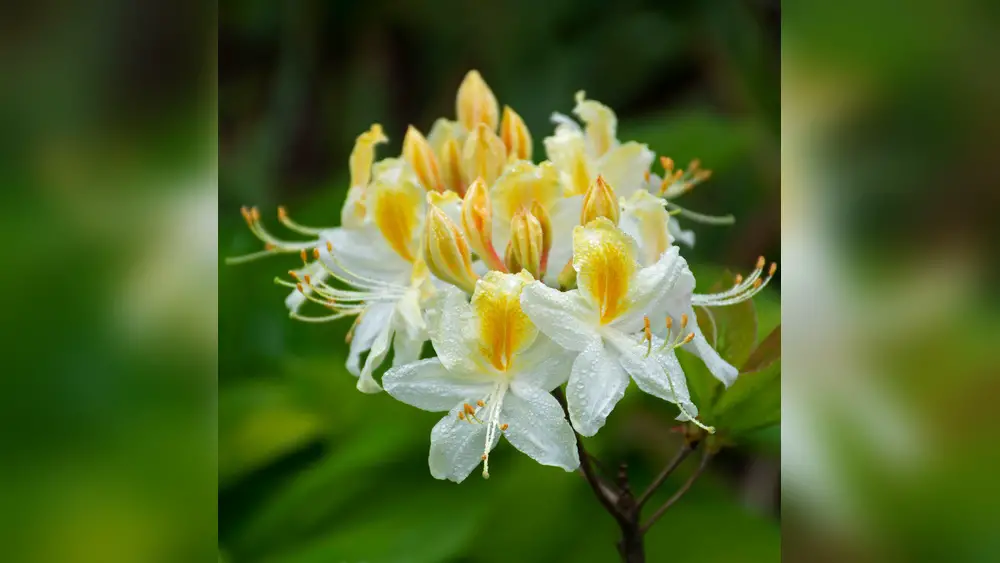If you live in Central Florida and want to brighten your home with beautiful plants, but only have spots with indirect northern light, you might wonder which plants will thrive best. You’re not alone—finding the right greenery that loves gentle, filtered sunlight can be tricky.
The good news is, there are plenty of stunning, low-maintenance plants that will flourish in those shaded corners and windowsills. Whether you’re a seasoned plant parent or just starting out, this guide will help you discover the best plants for indirect northern light in Central Florida, making your space greener and more inviting without the stress of constant sun care.
Keep reading to find your perfect match and transform your home into a vibrant oasis.

Credit: www.reddit.com
Northern Light Conditions In Central Florida
Northern light conditions in Central Florida create a unique environment for indoor plants. This area rarely experiences harsh, direct sunlight from the north. Instead, light is soft and filtered, ideal for many houseplants. Understanding these light patterns helps you pick the best plants for your home. These conditions offer a steady, gentle glow that nurtures plant growth without burning leaves.
Characteristics Of Indirect Northern Light
Indirect northern light is cool and diffused. It does not shine directly on plants but brightens the room evenly. This light is consistent throughout the day, avoiding harsh midday sun. Plants grow slowly but steadily under this light. Leaves tend to stay healthy and vibrant because the light is not too strong. This type of light suits shade-loving plants best.
Common Indoor Light Challenges
One common challenge is low light intensity. Some rooms may feel dim even with northern windows. This can cause plants to grow tall and spindly as they reach for light. Another issue is uneven light distribution. Corners and far spots often get less light, making plants there weaker. Finally, dust on windows or glass can reduce light levels. Regular cleaning helps keep light bright and clear for plants.
Placement Tips For Indirect Light Plants
Placing plants that thrive in indirect northern light requires thoughtful positioning. Proper placement ensures plants receive enough light without harm. Understanding window orientation, light filtering options, and indoor room setup helps keep plants healthy and vibrant.
Best Window Orientations
Northern windows offer soft, indirect light ideal for many plants. East-facing windows also provide gentle morning sunlight that suits indirect light lovers. Avoid south or west windows as they send harsh, direct sun that can burn leaves. Position plants a few feet away from these brighter windows to protect them.
Using Sheer Curtains And Filters
Sheer curtains soften sunlight, reducing its intensity before it reaches plants. Light filters and blinds serve the same purpose by blocking strong rays. These barriers create a gentle glow perfect for plants needing indirect light. Use them especially near south or west windows to avoid leaf damage.
Indoor Room Positioning
Place plants in rooms with good natural light but away from direct sun beams. Corners or areas a few feet away from windows work well. Rotate plants regularly to ensure all sides get light. Keep plants away from heating or cooling vents that cause stress or dry leaves.
Signs Of Light Stress In Plants
Plants need the right amount of light to grow healthy. Too much or too little light can cause stress. This stress shows in the plant’s leaves and stems. Recognizing these signs early helps keep plants thriving in Central Florida’s indirect northern light conditions.
Too Much Light Symptoms
Leaves may turn yellow or pale. Leaf edges might look burnt or crispy. Some leaves develop brown spots or patches. The plant may stop growing or drop leaves suddenly. Sunburned leaves feel dry and brittle to touch. These signs show the plant gets too much direct light.
Too Little Light Symptoms
Leaves become smaller and lose color. Stems grow long and thin, stretching toward light. The plant looks leggy and weak. New growth slows down or stops completely. Leaves may fall off more often than usual. These symptoms mean the plant needs more light to stay healthy.
Top Plants For Indirect Northern Light
Choosing plants that thrive in indirect northern light is key for Central Florida gardens. Northern light provides soft, gentle illumination without harsh sun rays. This light suits many shade-loving plants that brighten up spaces without needing direct sunlight. Here are some top plant choices for indirect northern light in Central Florida.
Ferns For Shade
Ferns love shady spots with indirect light. They add lush green texture to any garden or indoor space. Boston ferns and maidenhair ferns grow well in indirect northern light. These plants enjoy moist soil and cool, humid conditions. Ferns are low-maintenance and improve air quality.
Hostas And Their Varieties
Hostas are popular for shaded gardens. Their broad leaves come in green, blue, and variegated patterns. Hostas thrive in indirect northern light and handle Florida’s humidity well. They need regular watering and well-drained soil. These plants also attract butterflies and add color to shady areas.
Hydrangeas And Shade-loving Shrubs
Hydrangeas bloom beautifully in indirect northern light. Their large flowers brighten shady spots with pink, blue, or white blooms. Oakleaf and smooth hydrangeas suit Central Florida’s climate. Shade-loving shrubs like azaleas also thrive here. These shrubs provide structure and year-round greenery.
Impatiens And Other Annuals
Impatiens are vibrant annuals perfect for indirect light. They bloom profusely in shaded garden beds or containers. Other annuals like begonias and coleus also do well in low light. These plants add seasonal color and are easy to replace each year.
Perennials Suited For Low Light
Perennials such as astilbe and bleeding heart grow well in indirect northern light. They return each year, providing lasting beauty. These perennials prefer moist, well-drained soil and partial shade. Their delicate flowers add charm to shaded garden corners.
Landscaping With Shade Plants In Central Florida
Landscaping with shade plants in Central Florida offers a fresh way to brighten spaces with less sun. Many areas receive indirect northern light, perfect for plants that avoid harsh sun. These plants thrive in cooler, shaded spots, making gardens calm and lively. Selecting the right plants and materials helps create a beautiful, easy-care garden that fits local conditions.
Using Colorful Foliage Plants
Colorful foliage plants add life and texture to shady areas. Plants like caladium, coleus, and calathea have bright leaves that catch the eye. They bring color without needing direct sunlight. Their leaves come in reds, pinks, greens, and yellows, adding variety to any shaded garden corner. These plants stay healthy with indirect light and make the space feel vibrant.
Incorporating Shade-tolerant Flowers
Shade-tolerant flowers bring soft color and charm to shadowed spots. Impatiens, begonias, and fuchsias bloom well in indirect northern light. They brighten shaded beds and containers with pink, white, red, and purple flowers. These flowers need less sun but still offer plenty of color. Their blooms attract pollinators and keep the garden lively through warm months.
Light-colored Mulch Benefits
Light-colored mulch helps keep shaded areas cool and fresh. Using pine straw, light wood chips, or straw mulch reflects light and retains soil moisture. It reduces heat stress on plant roots and prevents weeds from growing. This mulch type makes shaded gardens look neat and clean. It supports plant health and keeps soil from drying out too fast.

Credit: pindersnursery.com
Care Tips For Indirect Light Plants
Plants thriving in indirect northern light need special care to stay healthy. Proper watering, soil, and pest control help these plants grow strong. Understanding their unique needs improves their lifespan and beauty. Below are simple care tips to help your plants flourish in Central Florida’s indirect light conditions.
Watering Practices
Water plants only when the top inch of soil feels dry. Overwatering causes root rot and harms the plant. Use room temperature water to avoid shock. Water slowly, allowing it to soak evenly. Empty excess water from trays to prevent standing water. Adjust watering frequency during different seasons for best results.
Soil And Fertilizer Recommendations
Choose well-draining soil to avoid water buildup. A mix of peat, perlite, and pine bark works well. Fertilize plants every four to six weeks during growing season. Use a balanced, water-soluble fertilizer at half strength. Avoid fertilizing in winter when plant growth slows. Proper soil and feeding support healthy roots and vibrant leaves.
Pest And Disease Management
Check leaves regularly for pests like spider mites, aphids, and mealybugs. Wipe leaves with a damp cloth to remove dust and pests. Use insecticidal soap or neem oil for infestations. Keep plants in good air circulation to reduce fungal diseases. Remove dead or yellowing leaves promptly to prevent spread. Healthy plants resist pests and diseases better.
:strip_icc()/peace-lily-spathiphyllum-wallisii-domino-bd41865a1-252ea4c0b35b43d19a41435b16a9cd01.jpg)
Credit: www.bhg.com
Frequently Asked Questions
Where To Put A Plant For Bright Indirect Sunlight?
Place plants near east-facing windows or a few feet back from south or west windows. Use sheer curtains to filter harsh light. Avoid direct sun to prevent leaf damage. Bright indirect sunlight occurs in spots with strong but diffused light, ideal for many indoor plants.
How To Landscape A Yard With Low Light In Florida?
Plant shade-tolerant species like firespike, ti plant, begonias, and bromeliads. Use light-colored mulch to brighten the space.
What Will Grow On The North Side Of The House?
Shade-tolerant plants like ferns, hostas, begonias, and caladiums thrive on a house’s north side due to low light.
Should I Water My Plants Good At Night Before A Cold Night Happens In Central Florida?
Water your plants thoroughly at night before a cold Central Florida night to help roots stay hydrated and reduce frost damage risk.
Conclusion
Choosing the right plants for indirect northern light in Central Florida brings many benefits. These plants grow well without harsh sunlight. They add beauty and freshness to your home or office. Pay attention to their light needs and placement. Adjust spots if leaves show signs of too much or too little light.
With proper care, your plants will thrive and brighten your space. Enjoy the calm and natural vibe they create indoors. Gardening becomes easier and more rewarding with the right plant choices.

